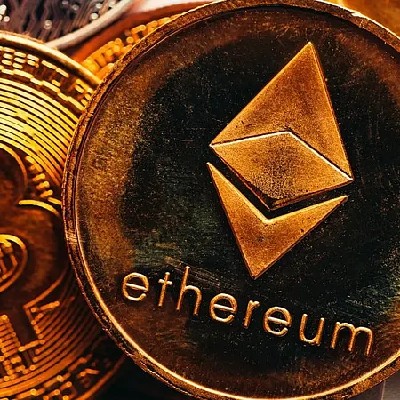
Solayer priceLAYER
Solayer (LAYER) has been listed in the Innovation, DEFI and LSD Zone. You can quickly sell or buy LAYER. Spot Trading Link: LAYER/USDT.
LAYER/USD price calculator
Live Solayer price today in USD
Do you think the price of Solayer will rise or fall today?
Solayer market Info
About Solayer (LAYER)
What Is Solayer?
Solayer is a Solana-based restaking protocol designed to enhance blockchain security, scalability, and decentralized application (dApp) performance. It allows users to restake their SOL tokens, helping to secure additional network services while earning rewards.
As blockchain networks grow, maintaining security and efficiency becomes a challenge. Solayer addresses this by introducing a Shared Validator Network (SVN) and Actively Validated Services (AVSs), enabling validators to secure multiple systems without requiring redundant infrastructure.
By integrating hardware acceleration, software-defined networking, and scalable consensus mechanisms, Solayer aims to improve transaction processing speeds, network stability, and cost efficiency for users and developers.
How Solayer Works
1. Restaking Mechanism
Solayer allows users to restake their SOL tokens or Liquid Staking Tokens (LSTs) to secure additional decentralized services. When users restake, they receive sSOL, a liquid utility token that represents their staked assets.
These restaked tokens are then allocated to Actively Validated Services (AVSs), which can include blockchain security services, decentralized financial applications, and other infrastructure components that require economic security.
2. Shared Validator Network (SVN)
The Shared Validator Network (SVN) enables Solana validators to secure multiple services simultaneously, improving resource efficiency and decentralization. Instead of requiring separate staking for different applications, Solayer allows a single staked token pool to protect multiple services.
3. Stake-Weighted Quality of Service (swQoS)
Solayer prioritizes transactions and network security based on stake-weighted contributions. This means that users who restake larger amounts of SOL receive higher priority and greater rewards for securing services.
4. Transaction Processing and Security Enhancements
Solayer integrates InfiniBand RDMA (Remote Direct Memory Access) and hardware acceleration to improve transaction speeds and scalability. This reduces network congestion and ensures that high-priority transactions are processed efficiently.
Additionally, Solayer uses a hybrid Proof-of-Authority and Proof-of-Stake (PoA + PoS) consensus model, ensuring fast transaction finality while maintaining decentralized security.
What Is LAYER Token?
LAYER is the native utility and governance token of the Solayer ecosystem. It plays a crucial role in network security, staking incentives, and decentralized governance. Users can earn LAYER tokens by restaking their SOL tokens or Liquid Staking Tokens (LSTs) to support Actively Validated Services (AVSs). Additionally, LAYER is used to pay transaction fees, delegate validator responsibilities, and facilitate liquidity within the ecosystem. The token’s integration with sSOL (liquid staking token) and sUSD (stablecoin) allows for flexible asset management and passive income opportunities.
Beyond its functional utility, LAYER also enables community-driven governance. Token holders can vote on key protocol decisions, including validator incentives, resource allocation, and network upgrades. By participating in governance, users influence the long-term direction of Solayer while benefiting from staking rewards. This system ensures a decentralized, transparent, and incentive-aligned protocol for validators, developers, and investors.
Solayer Roadmap
Solayer's roadmap outlines the planned development and expansion of its restaking protocol and blockchain infrastructure:
- Phase 1 (0-6 months) – Launch of the Solayer restaking protocol, sSOL token, and Shared Validator Network (SVN), along with onboarding initial Actively Validated Services (AVSs).
- Phase 2 (6-12 months) – Introduction of the sUSD stablecoin, integration with AI-driven applications, and developer grants to support new projects.
- Phase 3 (12-18 months) – Implementation of decentralized governance, optimization of Stake-Weighted Quality of Service (swQoS), and expansion into cross-chain integrations.
- Phase 4 (18-24 months) – Development of cross-chain restaking capabilities, improved interoperability with other blockchain networks, and deployment of InfiniSVM for enhanced processing speeds.
- Phase 5 (24+ months) – Expansion into institutional use cases, scalability improvements, and continued updates to staking and governance mechanisms.
The roadmap highlights Solayer’s focus on network security, staking efficiency, and blockchain scalability as it continues to evolve.
Conclusion
Solayer is a Solana-based restaking protocol that enhances blockchain security and scalability through Shared Validator Networks and Actively Validated Services. By allowing users to restake SOL tokens, it provides a new layer of economic security for decentralized applications. With the LAYER token, liquid staking (sSOL), and a detailed roadmap, Solayer aims to improve network efficiency, transaction speeds, and security infrastructure for the broader Solana ecosystem. Investors and developers interested in restaking, governance, or blockchain scalability can explore Solayer’s growing ecosystem for new opportunities.
AI analysis report on Solayer
Solayer Price history (USD)
 Lowest price
Lowest price Highest price
Highest price 
What is the highest price of Solayer?
What is the lowest price of Solayer?
Solayer price prediction
When is a good time to buy LAYER? Should I buy or sell LAYER now?
What will the price of LAYER be in 2026?
What will the price of LAYER be in 2031?
Hot promotions
Global Solayer prices
How to buy Solayer(LAYER)

Create Your Free Bitget Account

Verify Your Account

Convert LAYER to USD
FAQ
What is the current price of Solayer?
What is the 24 hour trading volume of Solayer?
What is the all-time high of Solayer?
Can I buy Solayer on Bitget?
Can I get a steady income from investing in Solayer?
Where can I buy Solayer with the lowest fee?
Related cryptocurrency prices
Where can I buy Solayer (LAYER)?
Video section — quick verification, quick trading

LAYER/USD price calculator
LAYER resources
Bitget Insights





Trade
Earn
LAYER/USDT
SpotLAYER/USDT
MarginLAYER/USDT
USDT-M FuturesPrices of newly listed coins on Bitget








